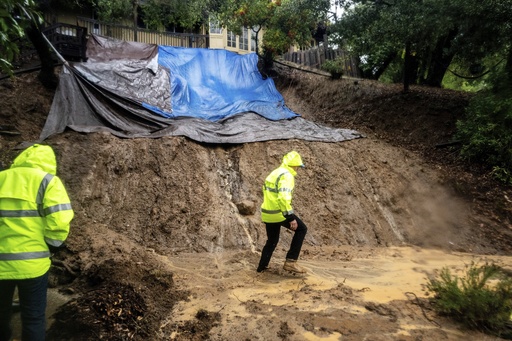
Mudslides, commonly known as debris flows among geologists and emergency responders, pose significant risks, especially in California. The state’s unique combination of landscape, climate, and geology creates environments where mudslides can frequently occur, leading to dangerous situations.
In response to these threats, California has implemented various protective measures. Efforts include identifying high-risk “hot spots,” constructing debris basins, and installing nets to capture debris before it reaches residential areas. These strategies aim to mitigate the destructive potential of mudslides, especially in vulnerable regions.
California’s susceptibility to mudslides can be attributed to its relatively young mountain formations. This youthful geology means that steep slopes are often unstable, composed of loose rocks and soil that can be easily dislodged, particularly during periods of wet weather. Furthermore, severe drought conditions can exacerbate the problem; when heavy rainfall strikes hardened, dry terrain, it can contribute to fast-moving runoff that carries soil and debris downhill.
Additionally, the issue of wildfires, which have become increasingly common across the Western United States, contributes to the risk of mudslides. When vegetation is burned away, the newly exposed hillsides lack the plant roots necessary to hold soil in place, making them more vulnerable to erosion and subsequent debris flows.
The most at-risk areas are those situated on or around hillsides that have experienced recent wildfires, where the loss of vegetation has significantly compromised soil stability. According to the California Department of Conservation, the removal of vegetation can double the rate of water runoff, leading to dangerous conditions. Past incidents serve as stark reminders of this risk. For instance, in January 2018, heavy rainfall on a recent wildfire burn area in Montecito triggered devastating debris flows that resulted in 23 fatalities and extensive property damage. Other historical events, such as a storm in 1934 that claimed 30 lives and a 2003 Christmas Day disaster that killed 16 individuals, highlight the longstanding dangers associated with mudslides in the region.
To protect communities from these hazards, one effective strategy is the construction of debris basins—excavated areas designed to capture and retain debris flowing downhill. The U.S. Geological Survey notes that these flows can exceed speeds of 35 mph (56 kph). Typically situated at canyon openings, debris basins facilitate the movement of water downstream while trapping solid materials. Nonetheless, these basins require regular maintenance, including sediment removal, to prevent them from becoming overwhelmed during heavy rainfall periods.
While debris basins are vital for managing land stability, they also demand considerable land space, which can disrupt local ecosystems. Their creation can lead to unforeseen costs, as evidenced by Santa Barbara County’s $20 million investment in a new basin following the 2018 mudslides. Reports indicated that prior basins in the area were inadequately sized and not cleared sufficiently, prompting community leaders to finance improvements, including hiring engineers to map canyon risk areas and installing protective nets.
The California Department of Conservation maintains a geological and landslide mapping initiative aimed at identifying high-risk locations and providing updated information that assists in local decision-making, including potential evacuation protocols. By employing a range of analytical tools—including terrain maps and advanced lidar scanning techniques—experts monitor and assess landslide risks. They also utilize aerial photography, satellite imagery, and information from GPS stations and other monitoring technologies to detect early warning signs of potential mudslides.
In summary, mudslides remain a grave concern in California, driven by a mixture of geological youth, climate conditions, and ecological devastation from wildfires. Continuous efforts to enhance preventive measures and monitoring systems are essential for safeguarding communities from these volatile natural events.

